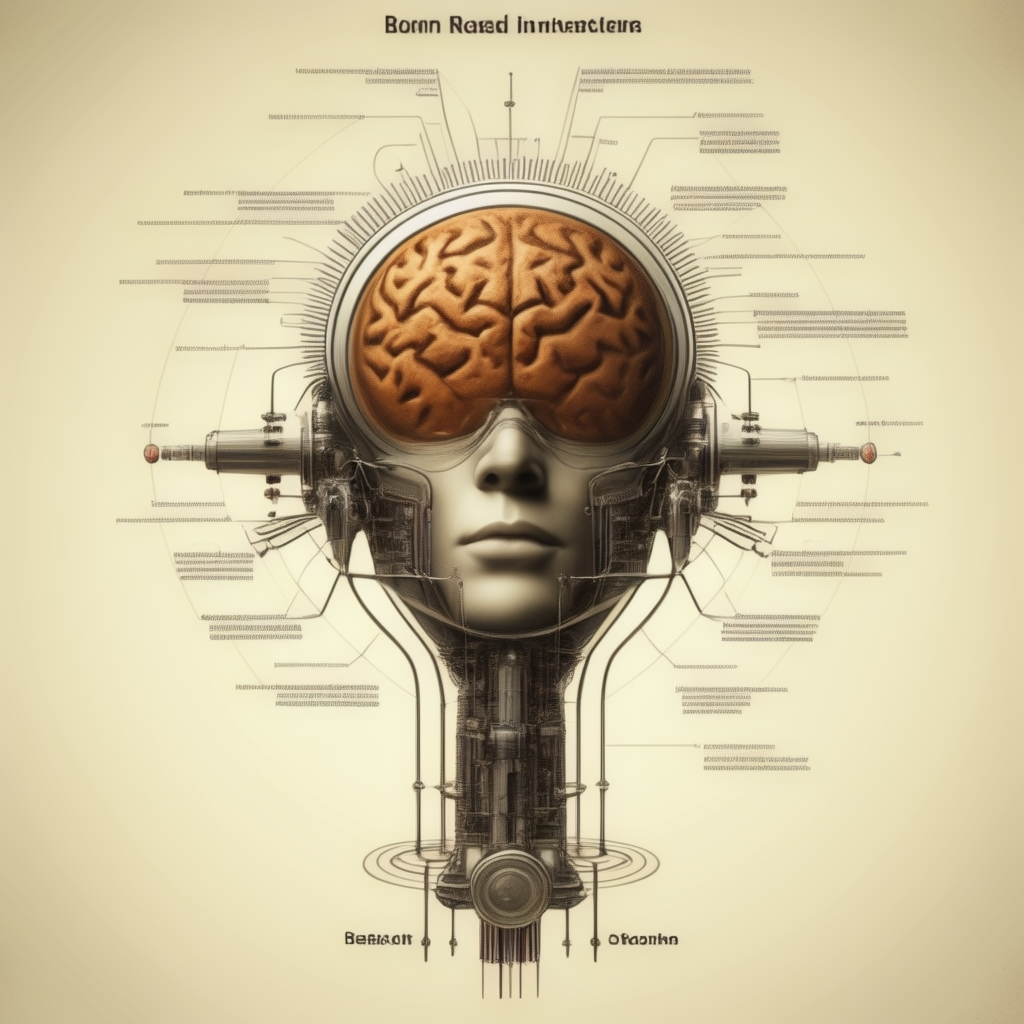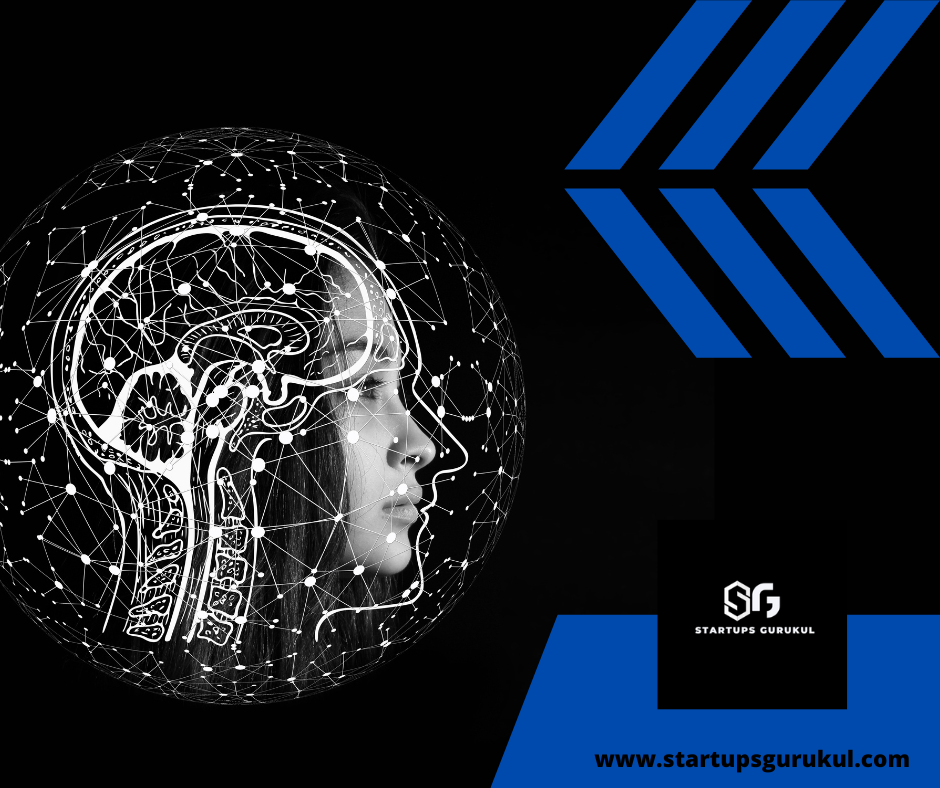In the ever-expanding universe of artificial intelligence, the emergence of open universe models marks a paradigm shift in how machines comprehend and navigate the complexities of the world. These models, inspired by the vastness of the cosmos, break free from traditional closed-world assumptions, allowing AI systems to adapt and learn in dynamic, uncertain environments. In this blog post, we embark on a journey through the celestial landscapes of open universe models, unraveling their intricacies, applications, and the transformative impact they bring to the field of AI.
1. Breaking the Closed-World Assumption:
- Dynamic Learning Environments: Traditional AI models often operate under the closed-world assumption, where all relevant information is known and fixed. Open universe models challenge this notion by embracing dynamic learning environments, acknowledging that the universe of data is continually evolving.
- Incorporating Uncertainty: Open universe models thrive in the presence of uncertainty. They gracefully handle scenarios where not all information is available, making them well-suited for real-world applications where data is incomplete or subject to change.
Cosmic Components: Key Elements of Open Universe Models
**1. Incremental Learning:
- Adaptive Knowledge Acquisition: Open universe models excel in incremental learning scenarios. They can adapt and learn from new information, continually expanding their knowledge base without the need for retraining from scratch.
- Efficient Resource Utilization: The ability to incrementally learn enables efficient resource utilization. Instead of processing the entire dataset anew, open universe models selectively update their knowledge, making them computationally efficient and scalable.
**2. Probabilistic Frameworks:
- Navigating Uncertainty: Probabilistic frameworks are integral to open universe models, providing a mechanism to express and reason about uncertainty. By assigning probabilities to different outcomes, these models navigate the uncertainties inherent in dynamic environments.
- Bayesian Networks and Beyond: Open universe models often leverage Bayesian networks and other probabilistic graphical models to capture complex dependencies between variables. This allows for more nuanced and realistic representations of the underlying data.
Celestial Applications: Practical Use Cases of Open Universe Models
**1. Adaptive Personalization:
- Tailoring User Experiences: In applications like recommender systems, open universe models shine. They can adapt to changing user preferences, incorporate new items seamlessly, and provide personalized recommendations that evolve over time.
- E-commerce and Content Platforms: Adaptive personalization extends to e-commerce platforms and content recommendation systems, enhancing user engagement and satisfaction by offering content or products that align with evolving user interests.
**2. Dynamic Decision Support Systems:
- Navigating Business Landscapes: Open universe models find applications in dynamic decision support systems, assisting businesses in navigating uncertain market conditions. They can analyze evolving data, assess risks, and recommend strategic decisions in real time.
- Financial and Investment Strategies: In the realm of finance, open universe models contribute to adaptive investment strategies. They can analyze changing market trends, incorporate new economic indicators, and dynamically adjust portfolios to optimize returns.
Stargazing into the Future: Advancements in Open Universe Models
**1. Transfer Learning Across Universes:
- Generalizing Knowledge: The evolution of open universe models involves exploring transfer learning techniques that allow them to generalize knowledge from one domain to another. This opens avenues for leveraging expertise gained in one context to improve performance in a different but related domain.
- Cross-Domain Adaptation: Open universe models are extending their reach into cross-domain adaptation, where they adapt knowledge acquired in one environment to excel in a different, possibly unrelated, environment. This promises increased flexibility and applicability.
**2. Hybrid Architectures:
- Combining Symbolic and Subsymbolic Reasoning: Researchers are exploring hybrid architectures that combine the strengths of symbolic reasoning and subsymbolic learning within open universe models. This fusion aims to harness the representational power of symbolic logic alongside the adaptability of subsymbolic machine learning.
- Integrating Neural Networks: Hybrid models often integrate neural networks, allowing open universe models to capture complex patterns and representations from data. This synergy between symbolic and neural approaches contributes to a more comprehensive understanding of dynamic environments.
Navigating the Cosmic Challenges: Overcoming Hurdles in Open Universe Modeling
**1. Handling Concept Drift:
- Continuous Adaptation: Concept drift, the phenomenon where the statistical properties of the data change over time, is a challenge in dynamic environments. Open universe models address this by continuously adapting to evolving data distributions, ensuring their relevance over time.
- Resilience to Changes: These models exhibit resilience to sudden shifts in data patterns, making them well-suited for applications where the underlying dynamics may change abruptly, such as in online streaming data or evolving customer behaviors.
**2. Ensuring Ethical and Fair Learning:
- Guarding Against Bias: Open universe models must be designed to guard against biases that may emerge as they adapt to new information. Ethical considerations are paramount to ensure that the learning process remains fair and unbiased, especially in sensitive applications like hiring or loan approval.
- Transparent Decision-Making: Ensuring transparency in decision-making is crucial. Open universe models should provide interpretable outputs, allowing users to understand how decisions are reached, fostering trust and accountability.
The Cosmic Symphony: Harmonizing Open Universe Models with Human Interaction
**1. Human-AI Collaboration:
- Enhancing Human Decision-Making: Open universe models contribute to a more effective collaboration between humans and AI. Their adaptive nature allows them to provide relevant insights to humans, enhancing decision-making processes in dynamic scenarios.
- User-Centric Design: User-centric design principles are integral to open universe models. These models should be designed with the end user in mind, ensuring that the adaptive learning process aligns with user expectations and requirements.
**2. Interpretable AI Interfaces:
- Explainability in Dynamic Environments: As open universe models operate in dynamic and evolving landscapes, ensuring explainability becomes paramount. Interpretable AI interfaces enable users to comprehend the reasoning behind model outputs, even as the model adapts to new information.
- Feedback Loops: Establishing feedback loops between users and open universe models fosters a collaborative learning process. Users can provide feedback on model outputs, influencing the adaptation process and ensuring that the model aligns with evolving user needs.
3. Explainable AI for Dynamic Decision-Making:
- Real-Time Interpretability: In dynamic environments, the ability to explain AI decisions in real-time becomes crucial. Open universe models are incorporating advanced explainability techniques, such as attention mechanisms and model-agnostic approaches, to provide clear insights into the factors influencing decisions as they adapt.
- Causal Inference for Transparency: Introducing causal inference methods enhances the transparency of open universe models. By understanding the causal relationships between variables, users can gain insights into not just the correlations in the data but also the cause-and-effect dynamics, fostering a deeper understanding of the model’s decision-making process.
4. Federated Learning in Evolving Networks:
- Decentralized Learning: As open universe models operate in diverse and evolving networks, federated learning becomes a key consideration. This decentralized approach allows models to be trained across multiple devices or nodes without the need to centralize sensitive data, ensuring privacy and scalability.
- Resilience to Network Changes: Open universe models leveraging federated learning mechanisms demonstrate resilience to changes in network structures. They can adapt to new participants entering the network or existing participants leaving, maintaining their learning capabilities in dynamic, decentralized settings.
5. Handling Anomalies and Outliers:
- Anomaly Detection for Dynamic Environments: Open universe models are equipped with robust anomaly detection mechanisms. In dynamic environments, the ability to identify anomalies and outliers is crucial for maintaining the model’s performance and preventing adverse impacts due to unexpected changes in the data.
- Adaptive Thresholds: These models dynamically adjust anomaly detection thresholds based on evolving data patterns. By adapting to the changing nature of anomalies, open universe models remain effective in identifying and addressing irregularities in real-time.
6. Context-Aware Learning:
- Temporal and Spatial Contexts: Open universe models excel in context-aware learning, considering both temporal and spatial contexts in their decision-making processes. This contextual understanding allows the model to make more informed predictions, especially in scenarios where the significance of data varies over time and space.
- Dynamic Feature Importance: Understanding the dynamic importance of features in different contexts is a focal point. Open universe models dynamically assign weights to features based on their relevance in specific contexts, ensuring that the model remains attuned to the nuances of evolving scenarios.
7. Quantum-Inspired Approaches:
- Quantum Computing for Enhanced Complexity: Exploring quantum-inspired approaches within open universe models is on the horizon. Quantum computing holds the promise of handling exponentially complex computations, providing a potential avenue for open universe models to address increasingly intricate learning scenarios.
- Quantum Machine Learning Techniques: Integrating quantum machine learning techniques into open universe models allows them to harness the power of quantum parallelism and entanglement. This can lead to more efficient processing of complex data structures and improved adaptation to changing environments.
8. Ethical Considerations in Evolving Environments:
- Dynamic Ethics Frameworks: Open universe models require dynamic ethics frameworks that adapt to changing circumstances. This involves continuous evaluation of ethical considerations, addressing issues such as fairness, accountability, and transparency as the model learns and evolves.
- Human-in-the-Loop Governance: Implementing human-in-the-loop governance ensures that ethical considerations are consistently monitored. By involving human oversight in the decision-making process, open universe models can align with evolving ethical standards and societal expectations.
9. Benchmarking and Evaluation Metrics:
- Dynamic Benchmarking: Traditional evaluation metrics may fall short in dynamic environments. Open universe models necessitate dynamic benchmarking strategies that evolve with the model’s learning process, providing meaningful insights into performance and adaptation capabilities.
- Agile Evaluation Frameworks: Agile evaluation frameworks consider not only the accuracy of predictions but also the model’s ability to adapt to new information. Metrics such as adaptation speed, resilience to concept drift, and efficiency in handling evolving data patterns become integral components of these frameworks.
10. Integrating Open Universe Models with Edge Computing:
- Edge Computing for Real-Time Adaptation: Open universe models are finding synergy with edge computing, enabling real-time adaptation at the edge of the network. This is particularly advantageous in scenarios where immediate responses to changing conditions are critical, such as autonomous vehicles or IoT devices.
- Decentralized Learning at the Edge: Open universe models leverage decentralized learning approaches at the edge, allowing devices to adapt their models based on local data. This not only ensures privacy but also enhances the model’s ability to capture localized patterns and dynamics.
11. Human-AI Co-Creation Platforms:
- Dynamic Collaboration Interfaces: As open universe models evolve, co-creation platforms are emerging to facilitate dynamic collaboration between humans and AI. These interfaces enable users to actively participate in the learning process, providing feedback, and influencing the model’s adaptation based on their domain expertise.
- User-Driven Evolution: Human-AI co-creation platforms empower users to contribute to the evolution of open universe models. Through intuitive interfaces, users can guide the model’s learning trajectory, making the AI system a collaborative tool that aligns with user objectives and expectations.
12. Cross-Domain Integration for Robustness:
- Learning Across Diverse Domains: Open universe models are venturing into cross-domain integration, where knowledge learned in one domain is applied to enhance performance in a different domain. This cross-domain learning approach aims to enhance the robustness and adaptability of the model across a spectrum of applications.
- Domain-Agnostic Representations: Developing domain-agnostic representations within open universe models allows them to capture common patterns and principles that transcend specific domains. This not only accelerates learning in new domains but also fosters a deeper understanding of underlying principles.
13. Self-Adaptive Model Hyperparameters:
- Dynamic Hyperparameter Tuning: Open universe models embrace self-adaptation not only in their learning process but also in their underlying hyperparameters. These models dynamically adjust hyperparameters based on the characteristics of evolving data, ensuring optimal performance without manual intervention.
- Autonomous Parameter Optimization: Implementing autonomous parameter optimization mechanisms allows open universe models to continuously search for and update hyperparameters. This autonomous tuning enables the model to remain effective in diverse and dynamic scenarios.
14. Swarm Intelligence for Collective Learning:
- Collective Decision-Making: Open universe models draw inspiration from swarm intelligence, where multiple agents collectively make decisions. This approach facilitates collective learning, enabling the model to leverage the diverse perspectives of individual agents and adapt to changing environments.
- Decentralized Information Sharing: Agents within open universe models share information in a decentralized manner. This allows the model to benefit from the collective knowledge of multiple agents, fostering adaptability, and enhancing the overall intelligence of the system.
15. Evolving Ontologies for Semantic Understanding:
- Dynamic Ontology Construction: Open universe models employ evolving ontologies to achieve semantic understanding of the changing world. These ontologies dynamically expand and reshape as the model encounters new concepts, ensuring a nuanced representation of the evolving semantic landscape.
- Adaptive Semantic Inference: Open universe models utilize adaptive semantic inference mechanisms to draw meaningful conclusions from dynamically changing ontologies. This enables the model to infer relationships, context, and meanings in real-time, even in the face of evolving semantics.
16. Lifelong Learning Strategies:
- Continuous Skill Acquisition: Lifelong learning strategies are inherent in open universe models, allowing them to acquire new skills continuously. These models do not consider learning as a one-time process but as an ongoing journey, adapting their knowledge base to master new tasks and domains.
- Memory-Augmented Networks: Memory-augmented neural networks are employed for retaining and recalling past experiences. This enhances the model’s ability to leverage historical knowledge, making open universe models adept at handling long-term dependencies and evolving patterns.
17. Robust Transfer Learning Across Domains:
- Domain-Aware Feature Representations: Open universe models focus on developing domain-aware feature representations that facilitate robust transfer learning. This involves extracting features that capture domain-specific nuances while retaining generalizable aspects, enabling the model to transfer knowledge effectively.
- Adaptation to Unseen Domains: Transfer learning capabilities extend to adapting to previously unseen domains. Open universe models dynamically adjust their knowledge representations to align with the characteristics of new domains, demonstrating adaptability across a broad spectrum of environments.
18. Energy-Efficient Model Training:
- Dynamic Model Pruning: Open universe models prioritize energy efficiency by incorporating dynamic model pruning techniques. This involves selectively retaining and updating model parameters based on their relevance to evolving data, resulting in streamlined and energy-efficient model architectures.
- Adaptive Computational Resources: In dynamic environments, computational resources may vary. Open universe models dynamically allocate resources based on the evolving complexity of tasks, ensuring efficient utilization of available computing power without compromising performance.
19. Cyber-Physical Integration for Real-World Interaction:
- Embedded AI in Cyber-Physical Systems: Open universe models extend their reach to cyber-physical systems, where AI is embedded into physical devices and interacts with the real world. This integration enables the model to adapt to real-time sensory input, making it responsive to changes in the physical environment.
- Edge AI for Low-Latency Adaptation: Leveraging edge AI capabilities, open universe models operate with low-latency adaptability. This is particularly valuable in applications such as robotics and autonomous systems, where immediate responses to changing environmental conditions are essential.
20. Cross-Modal Learning for Multisensory Adaptation:
- Fusion of Multimodal Information:
 engage in cross-modal learning, fusing information from multiple sensory modalities. This multisensory adaptation allows the model to comprehend and respond to dynamic changes in the environment, leveraging inputs from diverse sources such as vision, audio, and tactile sensors.
engage in cross-modal learning, fusing information from multiple sensory modalities. This multisensory adaptation allows the model to comprehend and respond to dynamic changes in the environment, leveraging inputs from diverse sources such as vision, audio, and tactile sensors. - Dynamic Sensory Weighting: The model dynamically adjusts the weighting of different sensory modalities based on their relevance in the current context. This adaptive weighting ensures that the model’s responses align with the salient features of the evolving environment.
A Cosmic Odyssey: The Future of Open Universe Models in AI
In conclusion, the exploration of open universe models in artificial intelligence signifies a cosmic odyssey, where machines transcend the boundaries of closed-world assumptions and embark on a journey of continuous adaptation and learning. As these models evolve, incorporating new techniques, addressing ethical considerations, and harmonizing with humans.
As the cosmic journey of open universe models continues, the frontier of AI exploration remains open, inviting new discoveries and advancements. The continuum of innovations in open universe models unfolds with each stride, as researchers and practitioners push the boundaries of adaptability, intelligence, and ethical considerations. The future promises a rich tapestry where open universe models seamlessly navigate the ever-changing landscapes of data, ensuring a harmonious interplay between artificial intelligence and the dynamic realities of our world.







